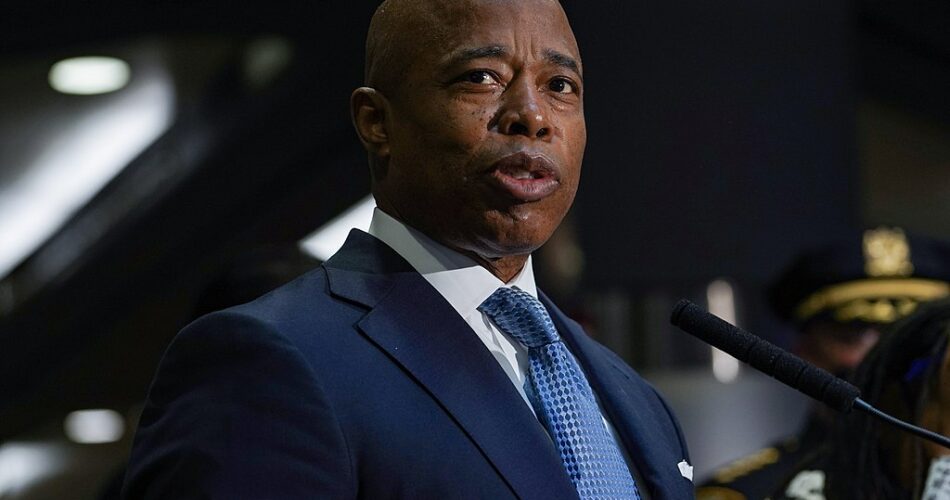He is delusional.
During a recent town hall in Brooklyn, Democratic New York City Mayor Eric Adams drew attention to his diverse team of appointees, likening the representation of minorities in his administration to a significant moment in the Bible. Adams highlighted the racial diversity among his deputy mayors, emphasizing their varied backgrounds as a reflection of New York City’s demographics. He suggested that criticism directed towards him stemmed from this commitment to diversity, equating it to the backlash faced by Jesus when he cleansed the Temple of wrongdoing.
Addressing the audience, Adams drew parallels between his actions and the biblical narrative, referencing a moment from the Gospel of Matthew where Jesus overturned tables in the Temple. He portrayed his efforts to diversify leadership positions, including the appointment of the city’s first woman police commissioner of color and other historic firsts, as a symbolic overturning of the status quo.
While Adams did not specify the source of the criticism he faced, his administration has encountered challenges, including managing the influx of migrants into the city and grappling with a surge in crime. He voiced frustration with Governor Greg Abbott of Texas for sending migrants to New York City and criticized both Governor Kathy Hochul and President Joe Biden for what he perceives as insufficient support.
Despite these challenges, Adams remains steadfast in his faith, having been raised in the Church of God in Christ and continuing to prioritize his Christian beliefs in his role as mayor. He has spoken out against the removal of prayer from public schools and emphasized the influence of his faith on his governance style, affirming the importance of integrating religious principles into his leadership approach.
In summary, Mayor Adams’ remarks underscore his commitment to diversity and his belief in the significance of religious values in public service, even amidst challenges facing his administration. His invocation of biblical imagery serves to illustrate the moral underpinnings of his leadership and his efforts to enact positive change in New York City.

I think Mayor Adams is a false prophet who refuses to accept responsibility for his own actions regarding his own Sanctuary State policies that helped foster the border crisis in the first place. Then he puts the blame on Republican Governors of border states who are just trying to defend their own citizens from these illegal aliens who then come into his state and committing violent crimes against the police and the citizens of his own Sanctuary City! It’s utter hypocrisy of these Democrat run cities and states who implemented these unconstitutional and illegal and utterly irresponsible Leftist policies! These people don’t deserve our compassion, but rather they should be removed from office! The Democrat Party and it’s utterly unbiblical policies are the true threat to America!